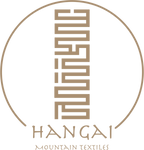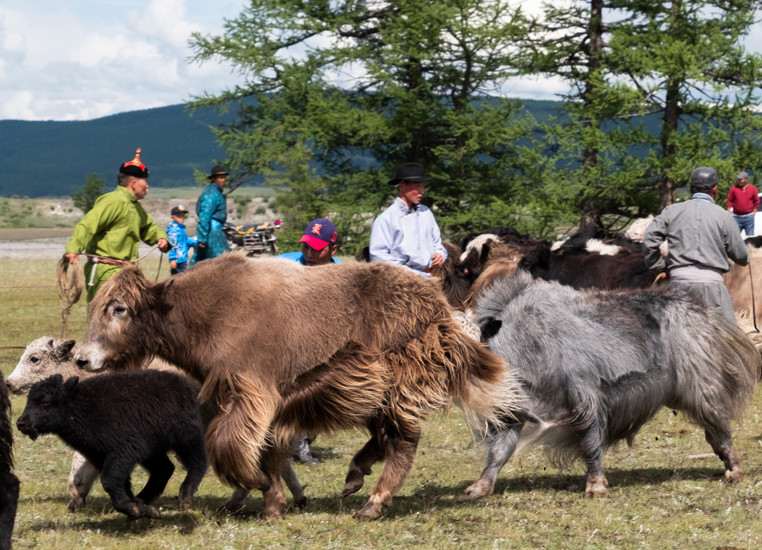The Sustainable Future of the Mongolian Steppe
Posted by Annika Furman on Jun 7th 2019
The Mongolian Steppe is a fragile ecosystem that relies on the animals and people that occupy it to keep it healthy. As herd sizes of goats, sheep, camels, and yaks increase, the steppe is beginning to be degraded by overgrazing and improper circulation of these animals. Goats and the demand for their cashmere have the largest negative impact on the steppe, whereas yaks degrade the environment far less. In order for Mongolia to grow economically, herders must understand how to sustainably maintain their herds in order to create a lasting ecosystem.
The Mongolian Steppe is a fragile ecosystem that relies on the animals and people that occupy it to keep it healthy. As herd sizes of goats, sheep, camels, and yaks increase, the steppe is beginning to be degraded by overgrazing and improper circulation of these animals. Goats and the demand for their cashmere have the largest negative impact on the steppe, whereas yaks degrade the environment far less. In order for Mongolia to grow economically, herders must understand how to sustainably maintain their herds in order to create a lasting ecosystem. As herders begin to create relationships with foreign fiber investors, they have the opportunity for expansion. This has caused them to focus on expanding their goatherds because cashmere fiber sells for the highest prices and is the easiest to comb; however, goats also harm the steppe. An increase in goatherd size and cashmere production is not sustainable in the long term. In order to prevent overgrazing and promote sustainability, many communities have created Pastor User Groups. On the outskirts of the Gobi Desert where vegetation is less plentiful, one, among others, pastor user groups has been successful with the help and support of the National Federation of Pasture User Groups, Sustainable Fiber Alliance (SFA) and a local mine [Bayan Airag] in near Durvuljiin. The main goal of the project is to work with herders and investors, such as Hangai, to prevent overgrazing so the land has time to recover during drought years. The SFA is also educating members on methods that prevent disease, while Bayan Airag mine is augmenting herd health by providing vitamins and other medicine. “This [practice] will increase the quality of the herds allowing each family to have healthier, smaller herds, resulting in higher quality fiber and milk and less overgrazing,” says the head of a Pasture Users Group in Zavkhan. In the future, the herders hope to introduce male goats from other regions of Mongolia in order to diversify their herds and increase quality. The PUG initiative began with 23 herder families and has now expanded to 35. Between all the families there are about 19,000 animals including cows, horses, camels, goats, and sheep. All the families are responsible for the wellbeing and effective rotation of the herds. In addition to the effective rotation, to preserve the health of the steppe, herders must diversify their herds to more than just goats. This has meant the circulating of different animal types for fiber including Mongolia’s most famous animal, the Yak.
Yak fiber, though less expensive than cashmere, is extraordinarily soft and durable. Yaks are also the epicenter of Mongolian culture because they represent the nation’s nomadic lifestyle. Festivals such as the Khövsgöl Yak Festival, are trying to increase the potential for herders, weavers, and sellers to collaborate around the environmental and economic future of yaks and their fiber. The festival is beginning to educate its participants about the proper way to maintain and graze yak herds as well as inform them about the opportunity to create an economy centered on yak fiber. Herders, weavers, and sellers have collaborated to create a sustainable supply and demand platform for economic growth on the steppe. Each must do their part to educate each other on methods for livestock health and growth and subsequent demands to fulfill these strategies. Economic growth and sustainability can go hand-in-hand. As herders begin to understand the economic value of yak fiber, they will transition away from cashmere dominant herds. In turn, allowing the steppe to rehabilitate and maintain a healthier ecosystem.
Successful pasture management and community involvement enable herders to produce high-quality fibers that can be sold at premium prices. These high - quality fibers are bought by textile companies like Hangai Mountain Textiles. The support from foreign investors, like Hangai, to buy the fibers sold at higher prices from the herders engaged in sustainability initiatives have raised the bar for fiber qualities, herd well-being and the vitality of the Mongolian Steppe. The relationship results in more income for local herding families, a stable future of steppe ecosystems and in turn a stronger economy founded on the nomadic and herding lifestyles of the Mongolians.
Written by Annika Furman
Annika Furman is currently a student at Colorado College. She travelled with founders Bill and Betina across Mongolia meeting herders and experiencing the culture of the vast steppe meanwhile gathering stories and insight.
Photo By Summers Moore

